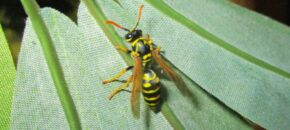
SPOTTED LANTERNFLY (Lycorma delicatula)(1st Flying Adults = 1700 GDD): There are still some red-colored 4th instar nymphs being observed but most areas of NJ are now seeing the adult stage of this invasive planthopper. Adult spotted lanternflies will initiate a migration period beginning in late August that will continue into the weeks of September. It […]
Continue reading...

